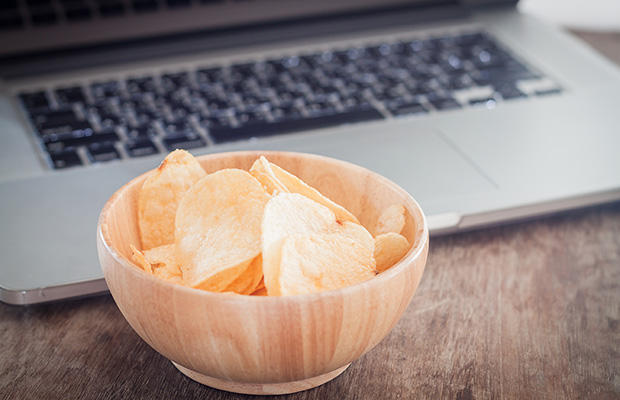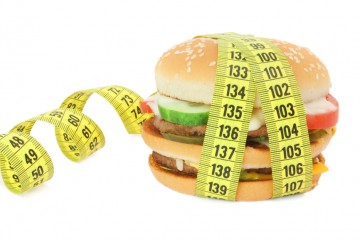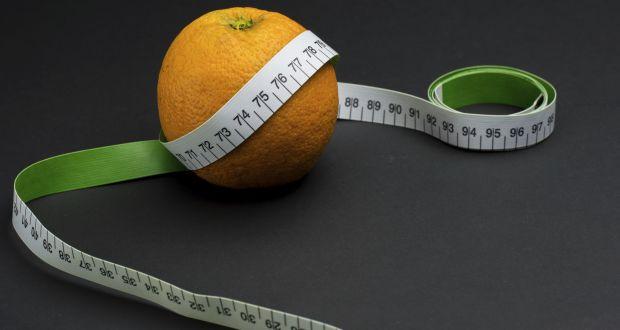Here are their top 6 gripes about bad eating habits.
Bad Eating Habit #1: We surround ourselves with food.
 Photograph by punsayaporn/Getty Images
Photograph by punsayaporn/Getty ImagesLoads of research from Cornell University's Food and Brand Lab suggests the more we surround ourselves with food—especially junky snacks like chips and cookies—the more likely we are to nibble on them. Remember: Out of sight, out of mind. By removing all food from your desk and countertops, you'll be less likely to feel hungry or eat mindlessly, the Cornell research shows. In general, the more difficult it is to get your hands on food, the less likely you'll be to eat. (Snack and lose weight with a box of Prevention-approved treats from Bestowed.)
Bad Eating Habit #2: We eat lots of small meals.
For years, the hottest trend among dieters was to spread out their calorie intake among many smaller meals—as opposed to a few mains. But research from the University of Southern California (and a lot of other places) shows the more often you eat, the more you tend to overeat. As a result, eating lots of small meals results in greater daily food intake than sticking to two or three larger meals, the USC researchers say. It's time to ditch the habit of "grazing" all day long in favor of fewer, more sensible meals.
Bad Eating Habit #3: We can't tell the good fats from the bad ones.
"Most people still don't get that some fats are actually good for you," says Alice Lichtenstein, DSc, director of the Cardiovascular Nutrition Lab at Tufts University. "You want to avoid saturated and trans fats"—the kinds found in red meat—"but you need more monounsaturated and polyunsaturated fats," Lichtenstein says. "Good sources are fish, nuts, avocados, and soybean and canola oils." Don't worry about how much fat you eat—just what kind, she adds.
Bad Eating Habit #4: We supersize to save money.
"People think that supersizing a restaurant meal is a money saver, but it's not a health bargain if it has way too many calories," says Karen Weber Cullen, DPH, RD, a professor of pediatrics and nutrition at Baylor College of Medicine in Houston. Judge with your palm, not your purse, Cullen suggests. A serving size should be about the size of your palm (larger for men than women, smaller for children). For most meals, pick one protein, one starch, one veggie, and one fruit in amounts based on a serving that will fit into your palm. (Here's what healthy portions of 9 popular foods ACTUALLY look like.)
Bad Eating Habit #5: We downplay the calories in liquids.
 Photograph by livecal/Getty Images
Photograph by livecal/Getty Images"What freaks me out is the amount of sugared soda and juice we drink," says Judith Stern, ScD, RD, professor emerita in nutrition and internal medicine at the University of California, Davis. "I'd like to see all the sugared drinks sent out into space, where they could orbit the Earth forever." Sugared drinks balloon your calorie intake and don't leave you feeling full. Tea, on the other hand, is a calorie-free brew that promotes heart health, staves off several types of cancer, strengthens bones and teeth, and protects the skin.
Bad Eating Habit #6: We don't know what "hungry" really feels like.
Much of eating is based on habit—not need. "If you don't know when you're hungry, you don't know when you're full, so you won't know when to stop eating," says Elisabetta Politi, RD, nutrition manager of the Duke Diet and Fitness Center. To combat mindless munching, you need to be more mindful at mealtimes. Try this:
1. Before you eat, relax and rate your hunger from 1 (hungriest) to 7 (fullest).
2. Eat slowly, pausing often to rate how your hunger changes.
3. When finished, rate yourself one more time. Try to stay between 2½ and 5½: not too ravenous when you start and not completely full when you stop.




